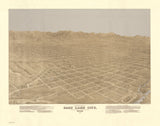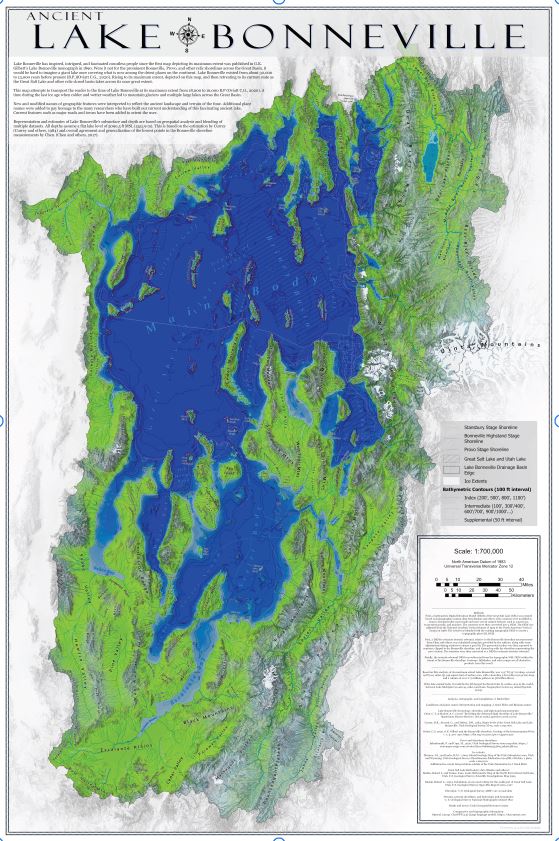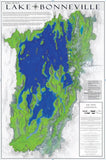Ancient Lake Bonneville from 18,000 to 16,000 B.P. Wall Map
By: Buck Ehler
Lake Bonneville has inspired, intrigued, and fascinated countless people since the first map depicting its maximum extent was published in G.K. Gilbert's Lake Bonneville monograph in 1890. Were it not for the prominent Bonneville, Provo, and other relic shorelines across the eastern Great Basin, It would be hard to imagine a giant lake once covering what is now among the driest places on the continent. Lake Bonneville existed from about 30,000 to 13,000 years before present (B.P.). Rising to its maximum extent, depicted on this map, and then retreating to its current state as a the Great Salt Lake and other relic closed basin lakes across its once great extent.
The map attempts to transport the reader to the time of Lake Bonneville at its maximum extent from 18,000 to 16,000 B.P. A time during the last ice age when colder and wetter weather led to mountain glaciers and multiple large lakes across the Great Basin.
New and modified names of geographic features were interpreted to reflect the ancient landscape and terrain of the time. Additional place names were added to pay homage to the many researchers who have built our current understanding of this fascinating ancient lake. Current features such as major roads and towns have been added to orient the user.
Representation and estimates of Lake Bonneville's subsurface and depth are based on geospatial analysis and blending of multiple datasets. All depths assume a flat lake level elevation of 5090 ft. This is based on the estimation by Currey (1984) and overall agreement and generalization of the lowest points in the Bonneville shoreline measurements by Chen and Maloof, 2017.
Published: 2024Media: paper - rolled
polypropylene (waterproof, tearproof) - rolled









